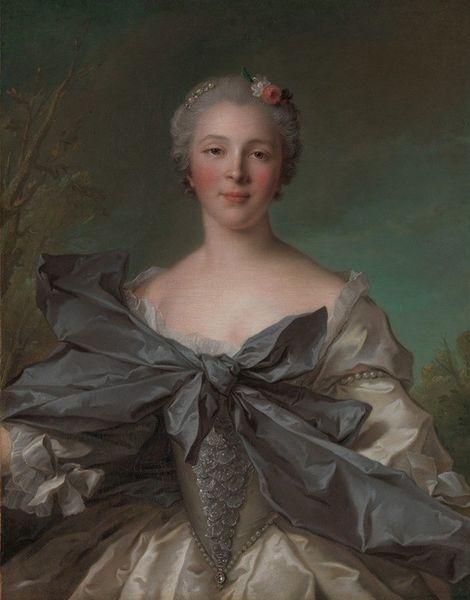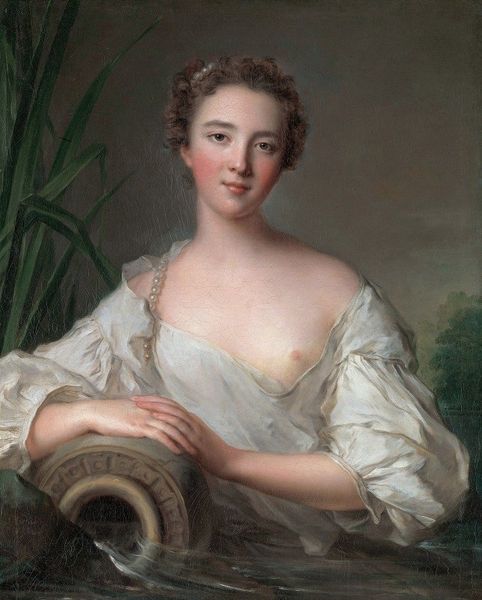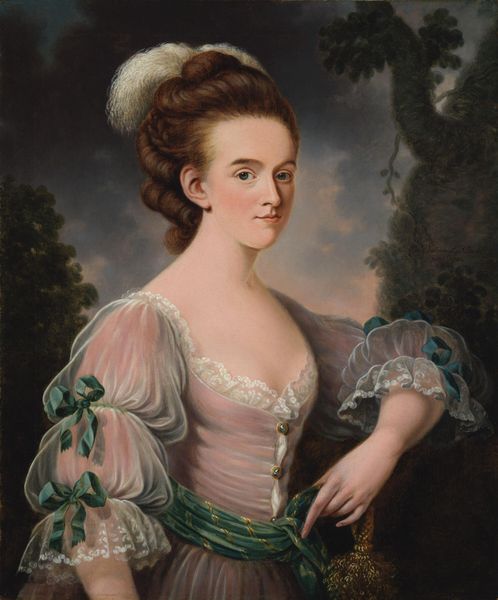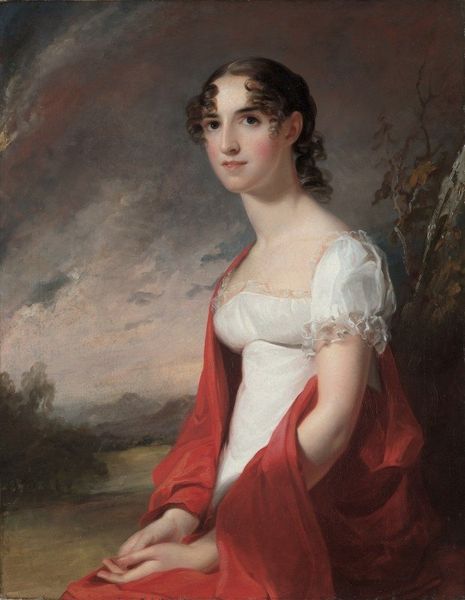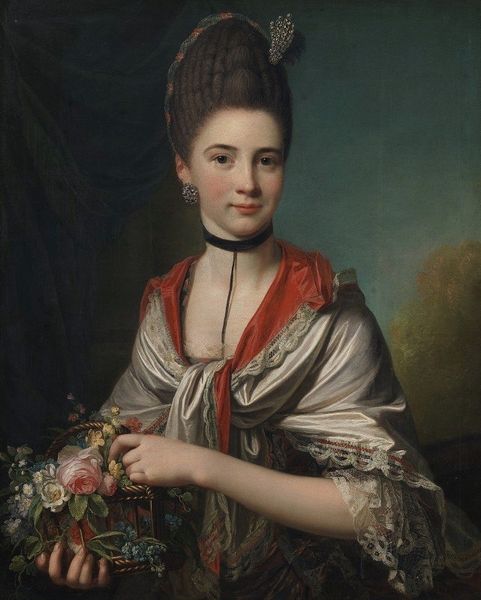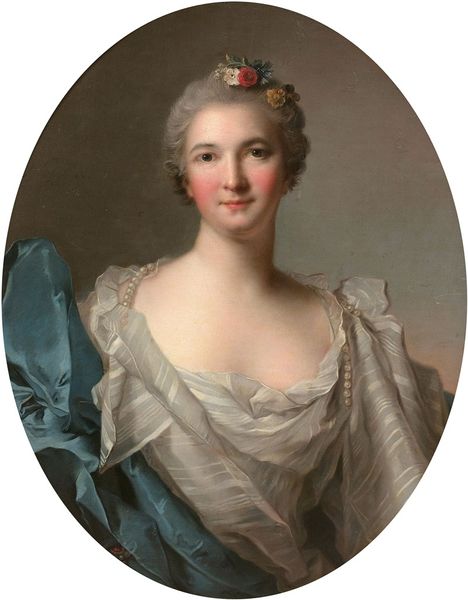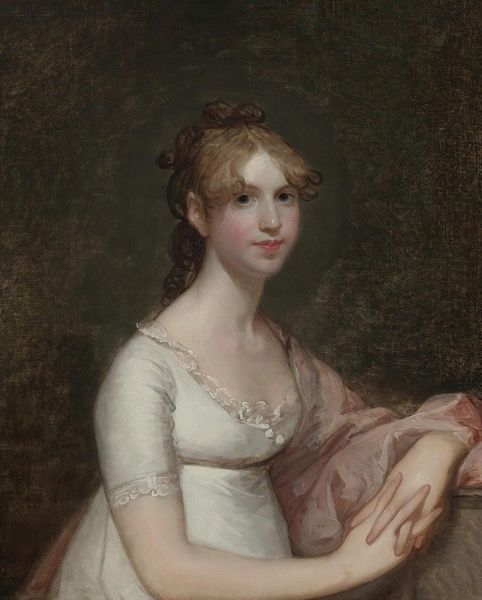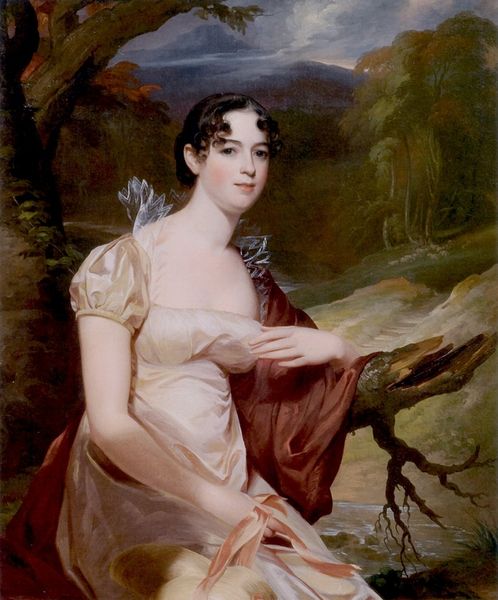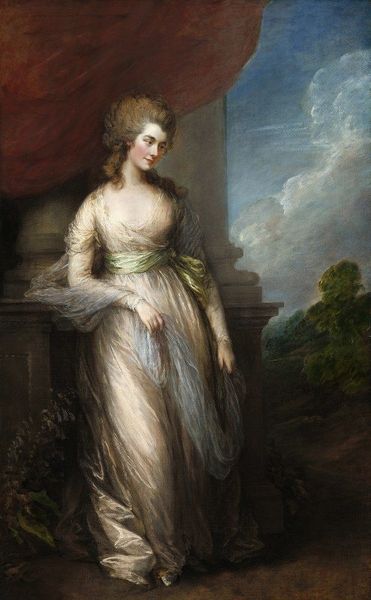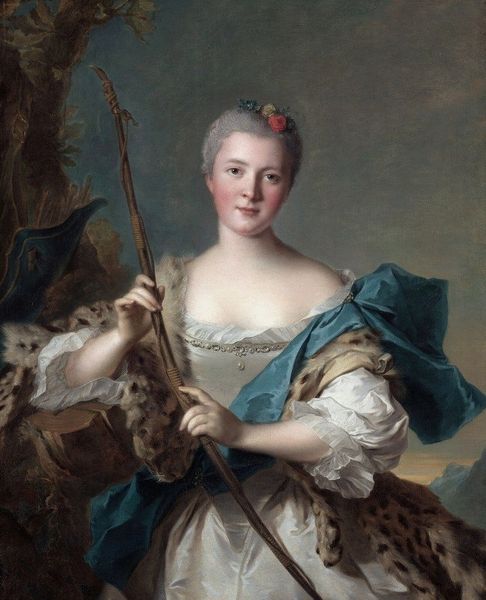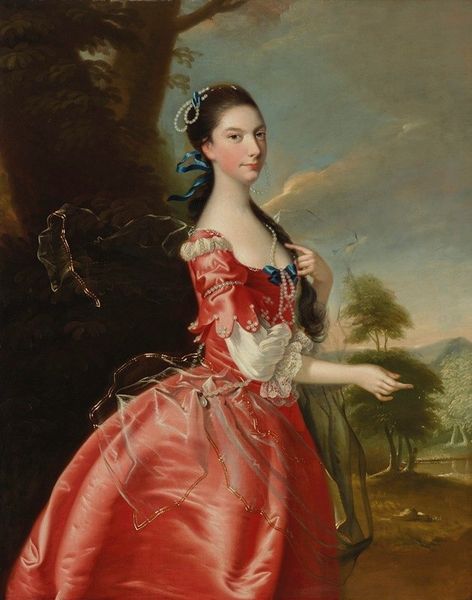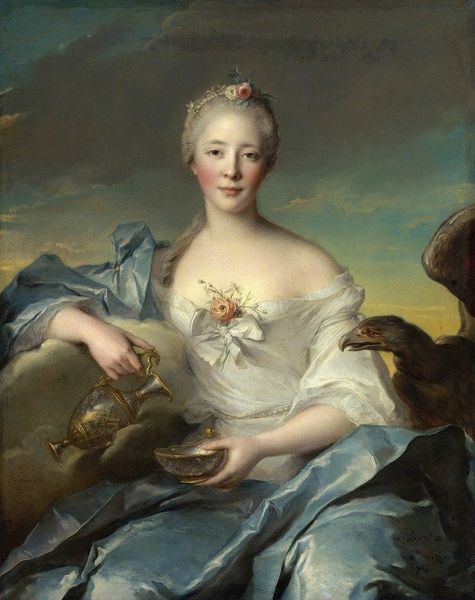
painting, oil-paint
#
figurative
#
painting
#
oil-paint
#
history-painting
#
academic-art
#
rococo
Copyright: Public Domain: Artvee
Curator: Looking at this painting by Jean-Marc Nattier, created around 1747, I'm immediately struck by the composition. It feels so opulent and ethereal. Editor: There's something unsettling about it to me. The stormy backdrop paired with the apparent tranquility of the sitter is very jarring. Curator: This is a portrait of Madame de Flesselles, painted in oil on canvas. The sitter, posed elegantly with an urn draped in rich, green fabric, is framed by reeds on one side and a landscape with a body of water on the other. These kinds of settings were very popular in eighteenth-century portraiture. Editor: Right, these representations tell us a lot about the status of the sitter and the role imagery played in constructing identity for elites during this period. Did the Flesselles family have ties to water or some myth that they're trying to associate with here? Curator: Potentially, the urn she rests on may hold meaning that related specifically to the sitter’s life or to some neoclassical ideal. What I also find compelling is the obvious tension created in these commissions of that era: the expectations of women in society juxtaposed with the symbols representing knowledge, privilege, and status, which at the time were reserved for men. Editor: Exactly! The artistic choices made here –the low-cut dress combined with her composed gaze– reveal some of the contradictions inherent in portraying women of power. Was she presented as intelligent and informed, or merely pleasing to the eye? And the somber palette contributes to an ambivalent reading, adding nuance to what at first might appear as another standard aristocratic portrait. Curator: Right, and analyzing these portraits can tell us so much about gender roles, class structures, and social aspirations during the era of its making and reception. It’s as much about social and political context as it is about brushstrokes and pigments. Editor: I agree. This seemingly simple image can reveal deep historical narratives about social dynamics and artistic trends within 18th-century France, as well as what they wanted the artwork and its message to be understood as for those to follow.
Comments
No comments
Be the first to comment and join the conversation on the ultimate creative platform.
